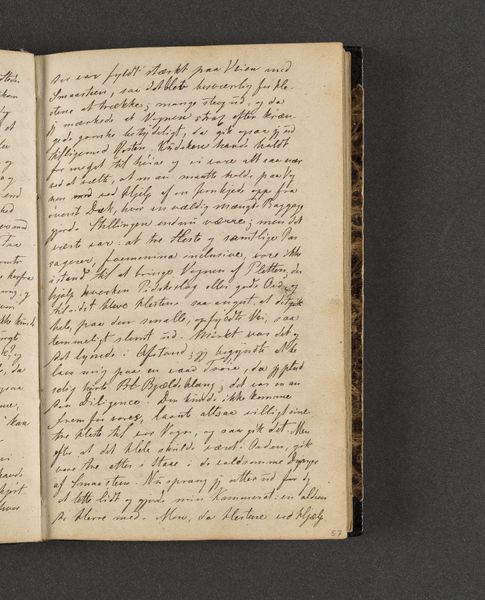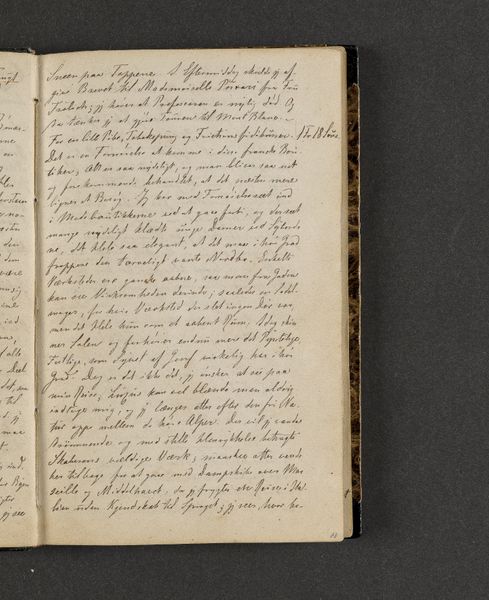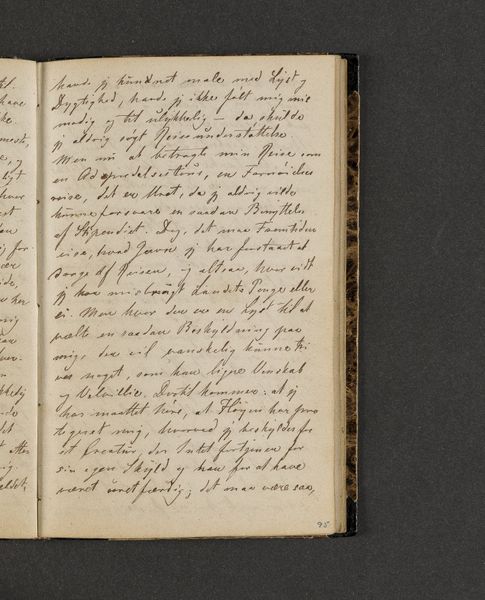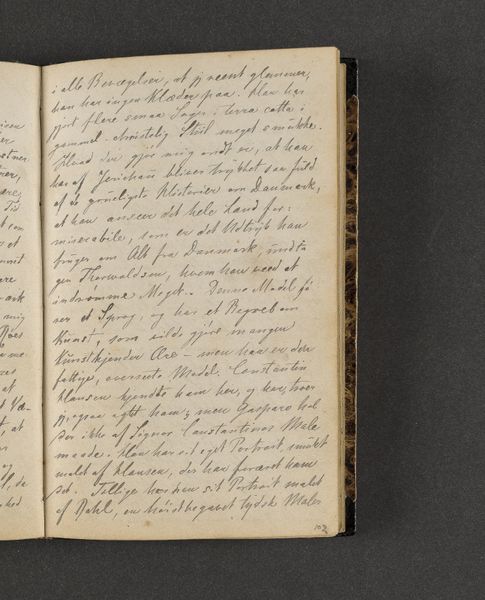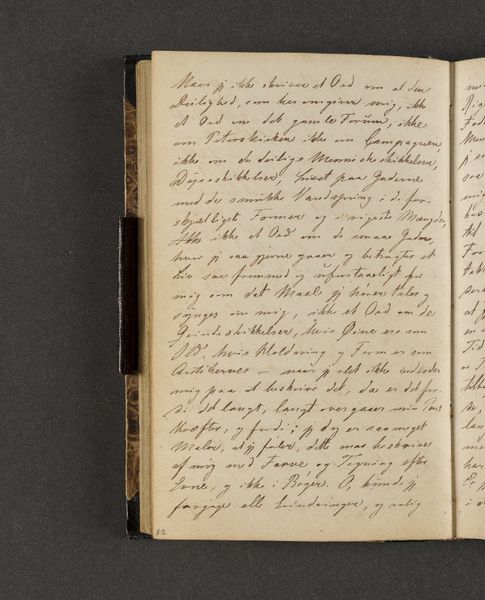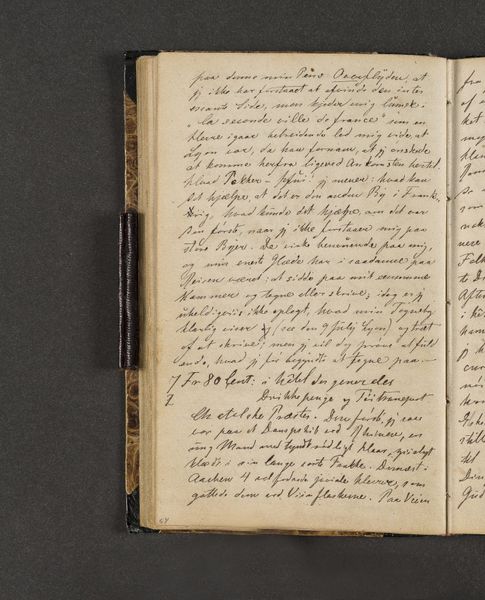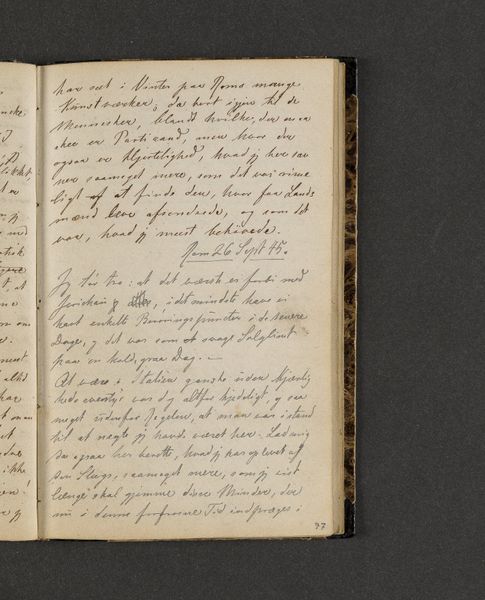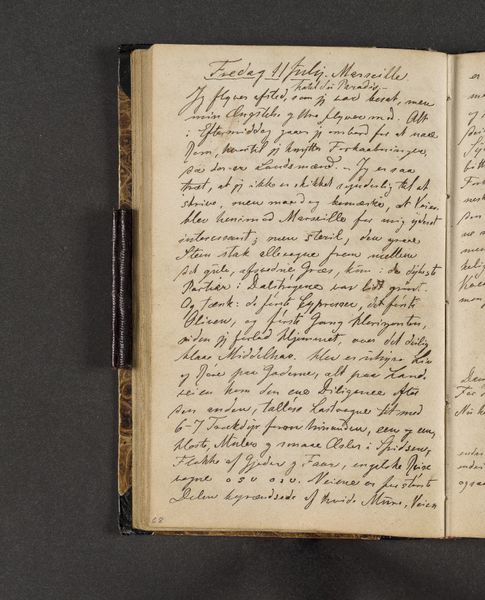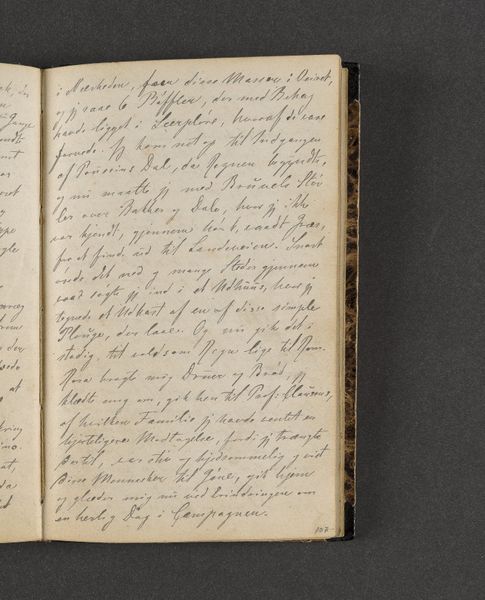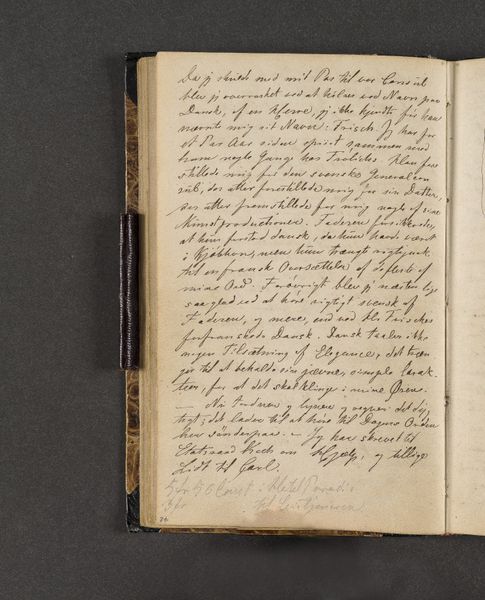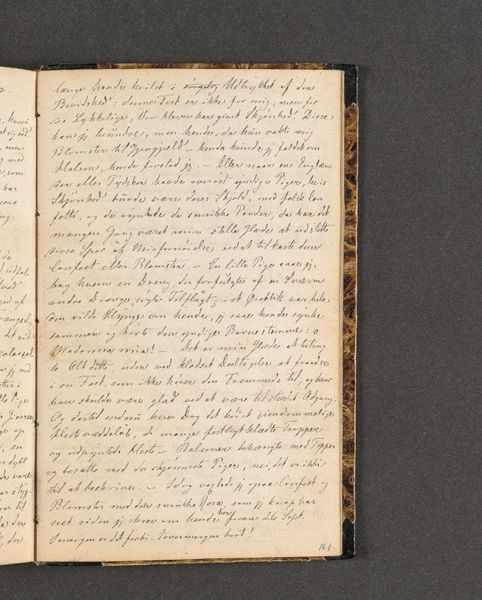
drawing, textile, paper
#
drawing
#
textile
#
paper
#
romanticism
Dimensions: 161 mm (height) x 103 mm (width) x 11 mm (depth) (monteringsmaal)
Editor: Here we have Johan Thomas Lundbye's "Rejsedagbog" or "Travel Journal" from 1845. It’s a drawing on paper and textile. The script gives it a very intimate feel, almost like eavesdropping on personal thoughts. What strikes you about this piece? Curator: What grabs me immediately is the raw materiality. Look at the weave of the textile binding, the fibers of the paper itself, even the way the ink bleeds and settles. Lundbye’s labor is evident. This isn’t just about expressing thoughts, it's about the *means* of expressing thoughts. The materiality inflects meaning, yes? Editor: I see what you mean. The texture of the page makes it seem more immediate. Almost tactile. Do you think he considered the paper a part of the artwork? Curator: Absolutely! Consider the socio-economic context. Paper wasn’t cheap. Each page represents a material investment, a resource. Lundbye is consciously engaging with this material reality. He’s transforming ordinary commodities into art. It raises questions – Who had access to these materials? Whose labor went into producing them? How were these diaries sold, bought, consumed? Editor: That shifts my perspective entirely. It’s not just a journal. It's a record of labour and consumption! Curator: Exactly! And the text, painstakingly rendered by hand, connects directly to Lundbye’s labor. What conclusions can you draw from the emphasis on the physical properties of the art supplies used by the artist, about how artwork can be understood? Editor: Thinking about it, focusing on process gives this artwork another dimension... more meaningful than only Romanticism, as is stated in its description. Thank you! Curator: Indeed! I am glad you were receptive.
Comments
No comments
Be the first to comment and join the conversation on the ultimate creative platform.
